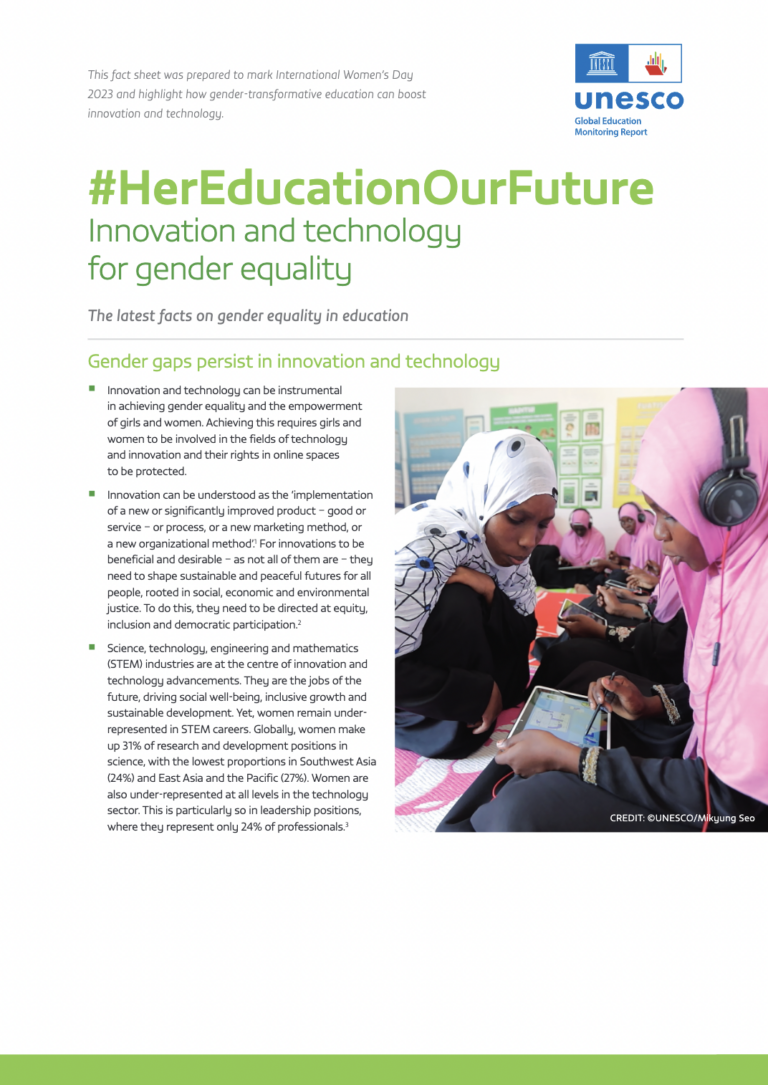Can we do better? (Reuters/Jianan Yu)
Written by Jenny Anderson, Quartz, May 21, 2018
Listen to any politician anywhere, and you will hear that education is the salve for all social ills. Inequality? Education will make the poor upwardly mobile. Job automation? Teach students the skills that robots can’t replicate.
Yet few countries have a serious game plan. When the Brookings Institution, a Washington, DC, think tank, surveyed more than 100 countries on what skills they wanted kids to have beyond math and reading, more than 76 identified things like communication, creativity, and critical thinking. But only 13 had a plan to make that happen.
The issue, as American philosopher and educator John Dewey once said, is that “if we teach students the same way as yesterday, we rob them of tomorrow.” Clearly, if education is going to solve our current social problems, countries around the world need a dramatic overhaul.
Rebecca Winthrop, director of the Center for Universal Education at Brookings, has some ideas about how to go about that. In her book Leapfrogging Inequality: Remaking Education to Help Young People Thrive, she and her team catalog 2,855 education innovations in 166 countries. Their goal?To create a blueprint to identify what it looks like to transform what kids learn, and how they learn it.
A skip along the way to leapfrogging
Somewhere in Rajasthan, India, a child is playing an online game involving multiplication. Onscreen, a race car driver speeds along, dodging a white bubble labeled with “59” but grabbing the bubble with the numbers “28”—the correct answer to the question of 14 times two.
She’s not doing this because she’s bad at multiplication tables; in fact, she scored among the highest in her group on a test. But she struggled to fold a square into eights during a subsequent virtual origami activity. The computer deduced that she had memorized the numbers, but did not fully understand them. Hence, the race car game.
This is an offering from Mindspark, an educational platform that lets kids play games while tackling holes in their learning, adjusting to the child’s level of mastery and allowing them to move through the games at their own pace. A dashboard lets teachers monitor students’ work in real time, customize topics, measure progress, and identify any holes.
This technology is being used by more than 12,000 kids in 70 public schools in Rajasthan, India, as well as in 150 private schools in the northern state, according to Leapfrogging Inequality. So far, the results look promising. A randomized-control trial study by the Abdul Latif Jameel Poverty Action Lab (J-Pal) found that students who attended Mindspark Centers over four-and-a-half months improved their math and Hindi more than twice as fast as students who did not participate. According to the book, the platform is not too expensive: $2 per month, or less than 10% of the per-pupil spending per month in Delhi’s public schools.
The central paradox of education
Mindspark is one of the innovations Winthrop and her team examine as they ask how to “leapfrog” in education, which they define as “any approach that can rapidly accelerate educational progress, perhaps skipping steps but certainly ending up in a new place altogether.”
Leapfrogging also means tackling what they see as the “central paradox of our time”: “We need to find a way to address massive inequality in schools while simultaneously broadening what kids learn,” Winthrop says.
In other words, countries need to bridge the vast achievement gap between lower-income kids and their wealthier peers. They also need to go beyond teaching children math, science, and reading. Those skills are necessary—but kids also need to know how to solve problems, think critically, and challenge assumptions. They need to be able to regulate their own emotions, work collaboratively, and be creative. And they need to have agency over their own learning.
Often, attempts to solve one problem undermine solutions for the other. The schools that have most aggressively tried to close achievement gaps between rich and poor students, for example, have often doubled down on traditional classrooms: teacher-led, compliance-based, and intensely focused on basic academic skills.
But it is possible to address both problems at once. Just as Africa largely skipped landlines and “leapt” to mobile, or bypassed brick-and-mortar banks on the way to mobile banking, countries like India, Finland, and Brazil are exploring ways to tackle educational inequality while also teaching kids the skills they’ll need for the global economy of the future.
Leapfrogging Inequality argues the core elements necessary to leapfrog are twofold: To transform teaching and learning, and to transform what we recognize as learning—that is, going beyond worksheets and tests. The book doesn’t weigh in on whether a particular innovation is good or bad; rather, it asks which problems the innovations address. Some tackle inequality; others address developing new skills. Those that do both are “leaps.”
What real leapfrogging looks like
In the US, from birth to age 18, children spend just 20% of their waking hours in school. That means that learning needs to happen both inside and outside the classroom and from a range of people that extends beyond trained teachers.
That’s the case in the rural village of Bhaumau in Uttar Pradesh—India’s most populous state. Pratham, one of the largest NGOs in India, has one program that provides students there with tablets loaded with educational lessons in Hindi and English. During afternoons, small groups of children between the ages of eight and 14 work in with the tablets, consuming content but also creating it, filming short skits, interviewing visitors or doing science experiments.
The projects included on the tablets help kids develop an array of skills, from digital literacy to critical thinking and teamwork, while providing “playful, dynamic learning experiences,” Winthrop writes. Parents make sure the devices stay charged, and Pratham staff update the tablets manually every few months.
Hybrid learning, as it is called, contrasts with how teaching and learning are done in the local village school, which uses more traditional, instruction-based approaches. In the first first three months of playing with the tablets, Pratham witnessed an 11% increase in pupils’ core academic skills such as reading in children’s mother tongue, reading and speaking in English, and science. And they’re clearly helping kids develop technological prowess: Only three months after the program started, the kids hacked most of the tablets’ passwords and added their own content.
Local problem-solvers
Context matters. Preparation for Social Action, a Ugandan tutoring program, uses trained community tutors to help kids in and out of school to apply math, science, technology, and language to community development activities. Kids might use math to analyze a local business’s cash flow, or learn biology by studying local agricultural activities.
Students meet five times a week for three hours, focusing on how to combine academic skills to social action—learning by doing. “Though students are not transforming or creating knowledge themselves, they do apply classroom knowledge to real-world contexts,” Winthrop and her team write. It’s not a leap, but a “skip” toward more effective learning, she argues.
Three ways to improve kids’ learning
Leapfrogging Inequality is not comprehensive list of global innovations in education. The list Winthrop developed came from 15 organizations such as the OECD, Ashoka, and Finland’s HundreED, relying on how those organizations defined what constituted an “innovation.” Winthrop and her team then rated those innovations through multiple lenses. Only about one-third of the organizations provided evidence of effectiveness of an innovation, and only 2% showed cost-effectiveness—suggesting the raw data was far from perfect, and education innovators could do far more in collecting and making public their data.
The book doesn’t offer one way leapfrog, because no two countries have the same context (innovation is part of the DNA of Finland; less so for Latvia). But it does draw from its survey of educational innovations, along with learning science and over 100 interviews, to offer suggestions about how governments, NGOs, philanthropic organizations, and the private sector should consider ways to improve kids’ learning. A few highlights:
1) More “playful learning”
Ample research (including this 2012 report to the National Research Council (pdf)) finds that incorporating student’s interests and agency into learning can improve kids’ knowledge and social and emotional skills . This model means teachers are less “sage on the stage,” more “guide on the side.”
2) Technology that actually transforms learning
When we use technology as a simple substitute for paper or chalkboards—say, doing a worksheet online—we’re not teaching students any new skills. Far better is technology that helps teachers personalize and accelerate learning. Most educators use the former; the latter holds more promise for leapfrogging.
3) More support for teachers to learn a breadth of skills
Research shows that the most effective way to improve learning is by supporting teachers to broaden their skills and knowledge. John Hattie, an Australian professor of education, combined over 1,200 meta-analyses and found that interventions related to teachers (rather than class size, or homework, or “learning styles”) were by far the most effective.
And yet only 23% of the innovations in Leapfrogging Inequality focused on teacher development or helping teachers learn the skills they need to improve, from expanding content to helping with pedagogy. According to the Education Commission, in Chile, for example, teachers have an average of less than half a person supporting them in their work, compared with the five medical personnel supporting doctors.
“Lots of innovations, of course, use teachers to deliver their work, but don’t have as a goal helping them develop their own craft and skill and ability as a teacher,” Winthrop said. She said she wasn’t sure why, but thinks there might be a perception that it is too hard to influence teacher behavior.
The way forward
People in education circles often complain that schools were built for an industrial age, and are hopelessly stuck in Victorian times We don’t live in a factory-model economy, so schools must radically change.
That’s easier said than done. For one thing, something in the model must be working: Over 200 years, the number of children enrolled in primary school increased from 2.3 million to 700 million—more than 40 times the rate of population growth.
For another, broad education reform happens through governments—and governments are notoriously slow to enact change to education systems. Politicians are hamstrung by election cycles; education is a divisive issue for voters (aka, parents); and experimenting with new pedagogy and content never seems to go over well, regardless of what learning sciences say.
That makes an education revolution unlikely. But higher-speed evolution is imperative. Leapfrogging might help kids get a jump start.



